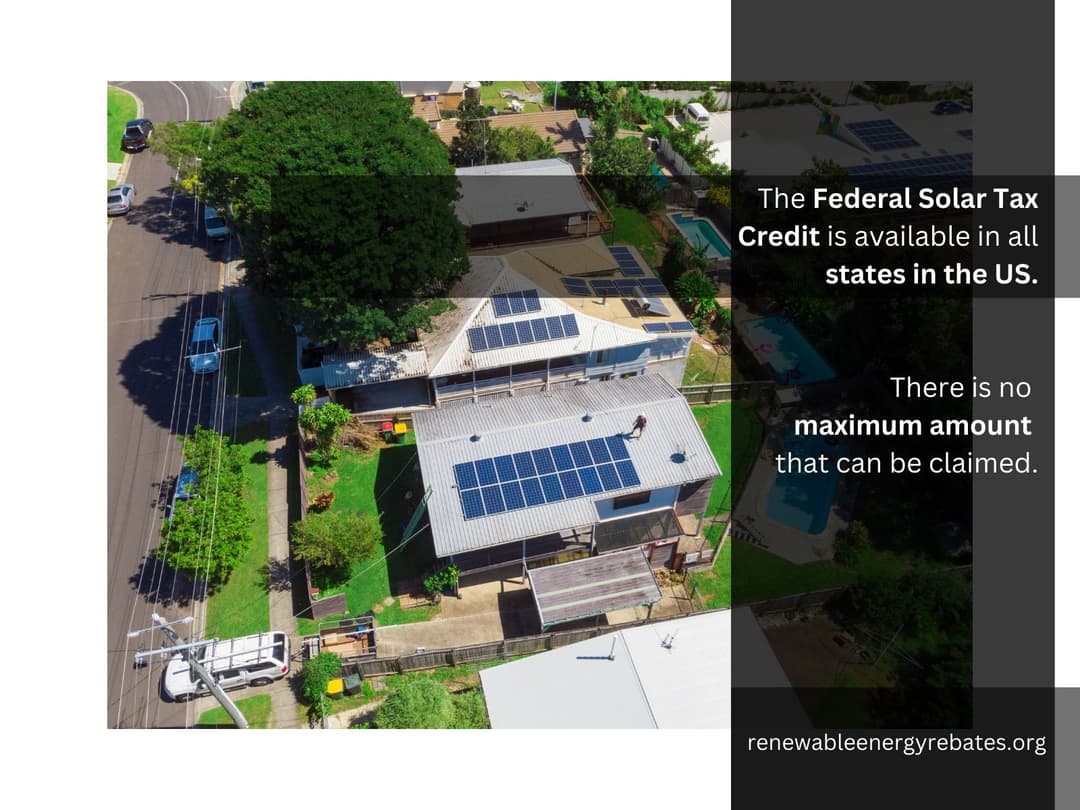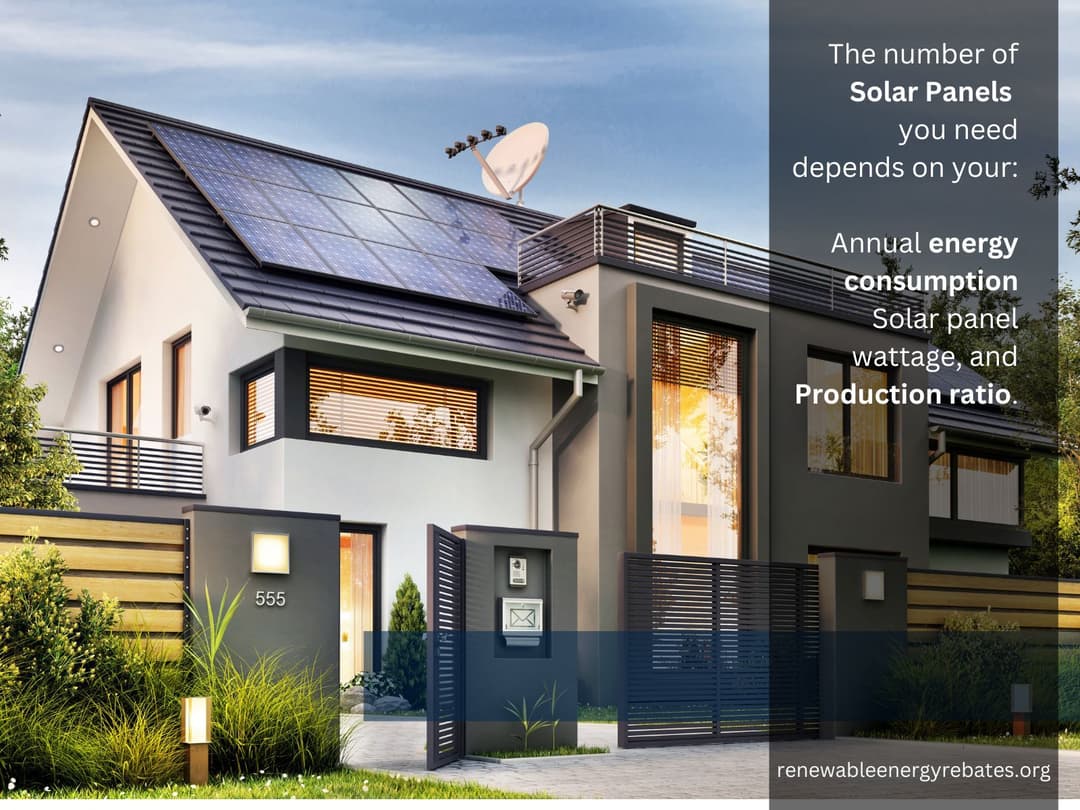Cost of Solar Panels in Ohio
A Comparison of Solar Panel Cost in Ohio
Key Details
- Solar panel installation in Ohio can range from $2.40/W to as high as $3.50/W
- Federal solar tax credit offers a rebate of up to 30% of the installation cost
- The number of solar panels required for a home installation is dependent on several factors including energy consumption, panel power rating, geographical location and panel efficiency.
- Going off-grid requires a solar system that exceeds the property's energy consumption with adequate space for all the required panels plus batteries.
How Much Do Solar Panels Cost in Ohio?
The cost of a solar panel in Ohio can range from as low as $2.40/W to as high as $3.50/W. This price variation is affected by multiple factors including component selection, labor costs, permitting costs, installation type, and the unique challenges of each project.
As of 2023, a 5KW solar installation in Ohio costs between $12,250 to $17,500. However the eventual amount paid for the project is usually much less. This is a consequence of the federal solar tax credit.

The federal solar tax credit allows the purchaser of a solar system to claim a tax credit on a federal tax filing. The tax credit afforded to the purchaser can be as high as 30% of the installation cost of the solar system.
This credit can be claimed if the system is installed between 2022 to 2032. The tax credit significantly reduces the cost of installing a solar system.
Average Solar Panel Cost in Ohio
| Size | Solar Panel Installation Cost | System Installation Cost After Solar Credit | Home Size |
| 3 kW | $7,200 to $10,500 | $5,040 to $7,350 | < 1,000 sq. ft |
| 5 kW | $12,250 to $17,500 | $8,575 to $12,250 | <1,000 sq. ft |
| 8 kW | $19,200 to $28,000 | $13,440 to $19,600 | 1,100 sq. ft |
| 9 kW | $21,600 to $31,500 | $15,120 to $22,050 | 1,300 sq. ft. |
| 11 kW | $26,400 to $38,500 | $18,480 to $26,950 | 1,700 sq. ft |
| 13 kW | $31,200 to $45,500 | $21,840 to $31,850 | 2,100 sq. ft |
| 14 kW | $33,600 to $49,000 | $23,520 to $34,300 | 2,300 sq. ft |
| 15 kW | $36,000 to $52,500 | $25,200 to $36,750 | > 2,400 sq. ft |
The solar installation wattage cost draws a stark contrast between the average retail price of electricity in the state. Data from the Department of Energy places the average retail price of electricity in Ohio at 14.31 cents/KWh.
How Many Solar Panels Do I Need in Ohio?
The number of solar panels needed for an installation depends on a range of factors, including the energy consumption, panel power rating, geographical location, and panel efficiency.
Generally, the more energy a building expects to generate, the greater the number of panels required.
The rating of the solar panel also matters. The power rating of a solar panel is the amount of electricity it has been tested to produce under certain conditions. This value is usually represented as wattage.
Typically, panels with a higher wattage rating will generate more electricity. Most residential solar panels have power ratings between 250 and 400W. If you want to keep the number of panels lower, it is better to get panels with a higher wattage rating.

Another important factor is the geographical location. Data from the National Renewable Energy Laboratory states the annual estimate of the global horizontal irradiance in most parts of Ohio as 4.00 to 4.25 kWh/m2/day.
This value implies that solar systems in the state will require more panels compared to an equivalent system in a location like California.
How Many Solar Panels Do I Need for a 3-Bedroom House?
The number of solar panels required to power a house is less dependent on the house's size but rather upon the house's energy consumption.
Data from the Energy Information Administration places the annual energy consumption for the average American household at 10,632 kWh. This is an average of about 886 kWh per month and an average of 29 kWh per day.
Homeowners can determine how much power needs to be generated by dividing the daily energy consumption by the amount of solar energy received by the area daily (peak sun hours).
Most parts of Ohio receive 4.00 to 4.25 kWh/m2/day of irradiance. This translates to 4 – 4.25 peak sun hours per day.
Step 1. Determine the Wattage
Using the lower value of peak sun hours:
29 kWh/4.00 peak sun hours = 7,250 watts.
The property will have to generate a minimum of 7250 W per day to supply its energy needs. This means it needs a 7.25 kWh system
Step 2. Calculate the number of Panels
The second step is to determine how many panels are ideally required based on panel specifications. Assuming 300 watt solar panels are used:
7250Kwh/300w = 25
This means the home will need 25 panels.
Step 3. Factor in Solar Losses
The third step is to factor in losses. Since the panels will have about 70% efficiency in practice, the 300w panels will generate less.
Daily generation quota/Panel power rating × losses = 7250(300 ×0.7) = 34.52 panels
The home will need approximately thirty five 300-watt solar panels
NB: The number of panels required will reduce if 400 watt solar panels are used. Conversely, if 100 watt or 200 watt solar panels are used the home will need more.
Do All Solar Panels Produce the Same Energy?
Solar panels vary in the type of energy they produce. There are three common types of solar panels: monocrystalline, polycrystalline, and thin-film panels.
Monocrystalline panels are the most efficient type of solar panel and also the most expensive. Its name stems from the characteristics of its PV cells, in which each cell is made of a single silicon crystal. Its conversion efficiency lies around 24% in lab tests and around 17% in practice. These panels produce the most power and are usually rated between 320 to 375W.
In comparison, polycrystalline panels are less efficient than monocrystalline panels and also cost less. They have a characteristic blue color. The conversion efficiency of these panels falls around 18% in tests and about 15% in practice. They are usually rated between 240 to 300W.
Thin-film panels are the least efficient type of solar panels and also the cheapest. These are made by depositing a photovoltaic material onto a suitable surface to create a film. They produce the least amount of power, having an efficiency of about 13% in tests, and about 7% in practice.
Which Type of Solar Panel is Best for Home Use in Ohio?
Monocrystalline panels are a popular pick for residential installations. Compared to polycrystalline panels, they offer higher power generation and efficiency. This makes them a good pick when working with limited roof space.
They also have the longest lifespan, having a working life expectancy of 25 to 30 years. The downside to this type of panel is its high cost, making them difficult to use on a small budget.
Can You Run a House Solely on Solar Power in Ohio?
Yes, it is possible to run a house solely on solar power in Ohio. This is referred to as going off-grid. To achieve this, the system design must be able to achieve several things.
Be able to supply the property’s entire energy needs:
The system’s production capacity must slightly exceed the property’s energy consumption. This requires precise calculation in determining the property’s energy usage and in selecting the number of panels to use. There must also be adequate space on the property to house all the required solar panels.
Be able to reserve energy:
Different conditions will impact the panel’s ability to produce energy, and the system must be able to cope with that. The panels will generate less on rainy days, when the sky is overcast, and during nighttime.
Coping with this period of deficit requires energy storage in the form of batteries. Different types of batteries can be used for this purpose, each with its benefits and disadvantages. But the overarching consequence of this addition to the system is the huge jump in installation cost.
An off grid solar system will require large, high-capacity batteries that can raise the project cost by several thousands of dollars.
How Big of a Solar System Do I Need to Go Off-Grid in Ohio?
To go off grid in Ohio, the panels will have to meet 100% of the property's energy needs. The following steps are useful in creating a rough estimate of what is required:
Step 1. Determine the property’s energy needs by consulting past utility bills.
This is the most accurate way of judging energy usage. Look at the variation in energy usage with the time of year. Pick the month with the highest usage to properly size the system.
Step 2. Determine the amount of sunlight the property receives.
A year-round estimate is convenient, but it is better to evaluate for each month. Solar panels generate the least amount of power during the winter months; thus, it is better to use this as a gauge. This will have the side effect of generating excess energy during the summer. Monthly averages can be estimated by examining the solar resource maps provided by the National Renewable Energy Laboratory.
Step 3. Select panel type.
The panel type intended for use will be a huge factor in the cost of the system. Also, the efficiency and power rating of the panel will dictate how much space the system requires.
Step 4. Examine the property for how much space can be used for solar installation.
Solar panels should be installed in locations that provide a lot of sunlight for most of the day. The roof is the most typical location for solar panels, though ground-mounted systems are also possible. Some new solar systems even have panels that move to track the sun, or panels that are coated on their opposite side to receive sunlight from two directions.
Below are several examples showing the solar panel cost in Ohio if planning to go off-grid for homes with different energy consumption. The calculations are completed using 300 watt solar panels.
| System Size | Number of Panels | Estimated Space | Estimated Cost |
| 3 kW | 15 | 247.5 sq. ft | $3420 |
| 5 kW | 24 | 396 sq. ft | $5700 |
| 8 kW | 39 | 643.5 sq. ft | $9120 |
| 9 kW | 43 | 709.5 sq. ft | $10,260 |
| 11 kW | 53 | 874.5 sq. ft | $12,540 |
| 13 kW | 62 | 1023 sq. ft | $14,820 |
| 14 kW | 67 | 1105.5 sq. ft | $15,960 |
| 15 kW | 72 | 1188 sq. ft | $17,100 |
These estimates do not include the cost of installation, the cost of batteries, or other costs. These are estimates of the cost of the panels themselves. The pricing of the panels in practice can vary wildly from these due to brand selection. Monocrystalline panels in Ohio may also cost more than the estimated values above.